Turtles are simply one of the easiest pets to keep! However, in the world of tortoises, there are some species that are quite challenging to keep, requiring owners to take care of water quality, environmental and dietary needs. Next, the editor will list the ten most challenging species of water turtles, which are: Malayan snail-eating turtle, dead leaf turtle, diamondback turtle, pig-nosed turtle, four-eyed turtle, serrated turtle, Round turtle, spiny mountain turtle, yellow-throated aquatic turtle, snake-necked turtle. Keeping these aquatic turtles requires more skill and care, so be sure to do your research and preparation before considering keeping one. At the same time, we must always pay attention to their health and provide them with a suitable habitat and a nutritionally balanced diet.

1. Malay snail-eating turtle
The Malayan snail-eating turtle is a rare species of turtle native to Southeast Asia. It is also called the Malayan snail-eating turtle or snail-eating turtle. They are a no-go zone for novice turtle owners as they are one of the most challenging turtle species. These turtles are usually sensitive and timid, and have poor adaptability to new environments. In daily feeding, be sure to pay close attention to temperature changes, because they are very sensitive to ambient temperature. In addition, Malay snail-eating turtles have extremely high requirements for water quality, and carapace rot is prone to occur among turtle species in Southeast Asia.
In addition, the Malay snail-eating turtle has a very special food habit, with aquatic snails, freshwater snails and clams as its main food. Since most of these animals have hard carapace, owners need to help them break the carapace regularly, just like taking care of a baby.
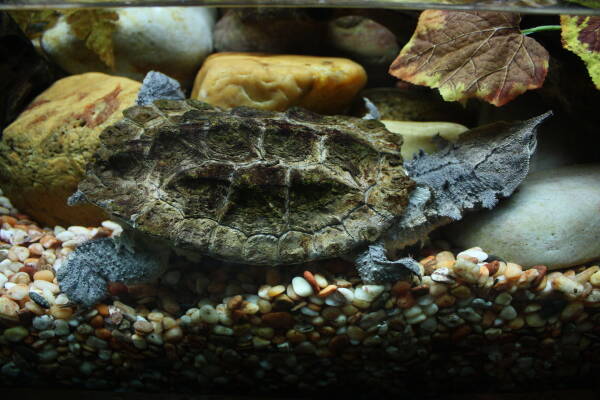
2. Leaf turtle
The dead leaf turtle, also known as the matamata turtle, is native to northern South America. Its unique appearance has attracted many people to breed it, but the breeding process can be said to be quite laborious. The eyes of leaf turtles are very small. They are afraid of direct sunlight and prefer to be in a dark environment. Therefore, you need to pay special attention to providing a suitable environment when raising leaf turtles.
For leaf turtles, water quality requirements are very strict. They need to provide balanced water quality, usually requiring the pH value of the water to be between 5.5-6.5, usually maintained around 6. Water temperature is equally important and must be maintained at a warm water temperature between 26-28 degrees. This requires owners to monitor and adjust water quality and temperature according to the situation to ensure that the turtles' living environment meets these requirements. In addition, dead leaf turtles almost only eat live food, which means that owners may need to find ways to obtain live fry every day, which may cause some trouble to owners.

3. Diamondback Turtle
Diamondback turtles are native to the eastern and southern United States. They live in brackish water environments, which makes them relatively difficult to keep. In order to successfully raise diamondback turtles, there are some important considerations that need to be followed. First, it is best to add sea crystals or large grain salt to the breeding water to create the water environment they like. This can simulate their living conditions in the natural environment as closely as possible. Moreover, the skin of diamondback turtles is very sensitive to water quality, so a high-efficiency filter is also essential. If you use sea salt for breeding, you also need to use the common nitrifying bacteria found in freshwater fish tanks to ensure the stability and purification of water quality.
In addition, in order to maintain good water quality, be sure to feed outside the tank so that the feces can be cleaned up in time. Diamondback turtles have a huge appetite, but we need to control the amount of food they feed. Hatchlings are fed twice a day, while adults are fed once every two days. As they grow, we need to pay attention to the diversity of feeds to ensure their nutritional intake is balanced and comprehensive.

4. Pig-nosed turtle
Pig-nosed turtles are native to Australia, Irian Jaya and New Guinea in Oceania. They are loved by many turtle enthusiasts for their cute appearance. However, they are a very fragile turtle species and require a high maintenance threshold. There are some important points to keep in mind in order to successfully raise pig-nosed turtles.
First of all, pig-nosed turtles are large water turtles, so in a captive environment, the tank must provide enough space for activities. This ensures they can swim and stretch out comfortably. In addition, the maintenance of water temperature is also crucial, and the optimal range is 25-30 degrees Celsius. The pH value of the water is best between 8.0 and 8.3 to create a water quality environment suitable for their growth.
Pig-nosed turtles are highly aquatic turtles, so their feces can easily lead to overly rich water conditions. Therefore, we need to change the water regularly and use quicklime or bleaching powder for disinfection every 20 days to ensure clean and healthy water quality. This helps reduce the build-up of impurities and bacteria and keeps your turtle pond sanitary.
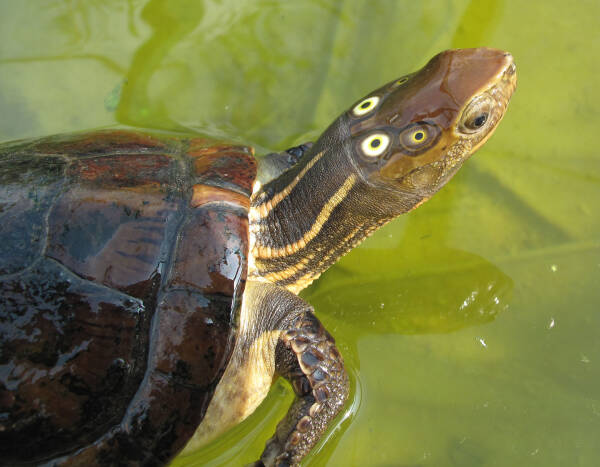
5. Four-eyed turtle
The four-eyed turtle is a timid turtle that likes to live in dark places at the bottom of the water. There are some important things to keep in mind when raising this turtle. First of all, no matter where the new turtles are introduced from, they need to be quarantined and disinfected to ensure their health.
The four-eyed turtle is omnivorous, but prefers animal food. They like to eat lean pork, shrimp, small fish and mealworms. To meet their dietary needs, we need to provide the appropriate types and portions of food. Remember, feeding turtles is only part of giving them food. We also need to ensure that the breeding environment is suitable.
Four-eyed turtles are cold-blooded animals, and their activities and food intake will change with changes in ambient temperature. Therefore, recording air and water temperatures is very important for daily feeding. By observing changes in temperature, we can keep track of the turtle's activities and feeding status. Pay special attention to how much your turtle is eating to ensure their health.
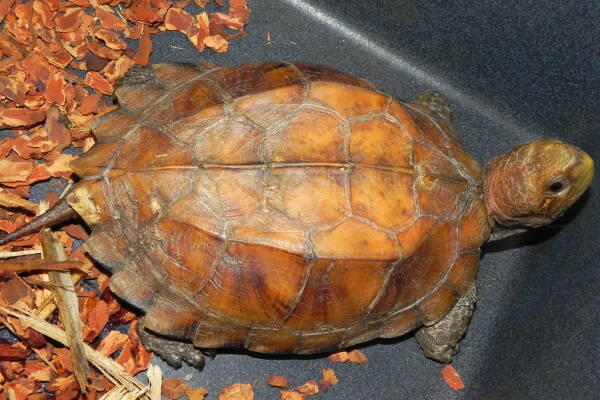
6. Saw Turtle
The Saw Turtle, also known as the Octopus Turtle, is named after the eight sawtooth-like bumps on the back of its carapace. This is a species of turtle native to China. Compared with other water turtles, sawnip turtles prefer land, so the breeding environment needs to be half water and half soil. Some people choose to spread coconut soil in the breeding box to raise them.
Sawtooth turtles have a challenging diet, and they need to eat at the right temperature. If the temperature is inappropriate and the turtle loses its appetite, we can consider purchasing tools such as heating lamps to provide appropriate heating. But pay attention to temperature changes and don't let the temperature get too high. Under normal circumstances, Sawtooth turtles prefer to eat live food, such as earthworms, barley worms, etc. You can add fruits and vegetables in appropriate amounts to increase the richness and nutritional balance of the diet. Remember, raising sawnose turtles requires providing a variety of food options to meet their nutritional needs.
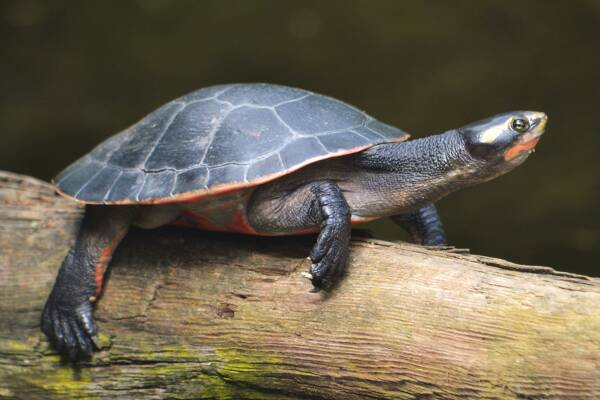
7. Yuanao Turtle
The round turtle, also known as the red-striped turtle, is native to Oceania. Round turtles are highly aquatic turtles that rarely leave the water and only come ashore to bask in the sun and build nests. They like to be exposed to the sun very much, so you need to prepare sunlight or a heating lamp. Of course, natural sunlight is a better choice.
In order to meet the needs of round turtles, we should provide slopes such as cork bark and plastic plants to allow them to climb out of the water and serve as supports for them to rest at night. Round turtles have high requirements for water quality and are very sensitive. Raising them with tap water can easily cause skin rot problems, so it is best to use old water for breeding. Finally, it is very important to keep turtles sunbathing on their backs frequently. If kept indoors for a long time, we must provide UVB lighting to meet their needs. Maintaining proper lighting conditions is vital to their health.

8. Spiny Mountain Turtle
The spiny mountain tortoise is famous for its ring of spines on its back, so many people keep it as a pet. Adult spiny mountain turtles should be kept in large water and land reservoirs, divided into two areas: water and land. Once or twice a week, your turtle can be misted with a sprinkler to maintain the desired humidity.
In addition, spiny mountain turtles require appropriate lighting and basking conditions. The ambient temperature should be maintained between 27-30°C and ensure a 12-hour day and 12-hour night light cycle every day. They are cold-blooded animals and are very affected by the ambient temperature, so keepers need to pay attention to the temperature at all times. Spiny mountain tortoises are herbivores, and generally can choose vegetables and fruits as their main diet. Moderate amounts of meat can also be provided.
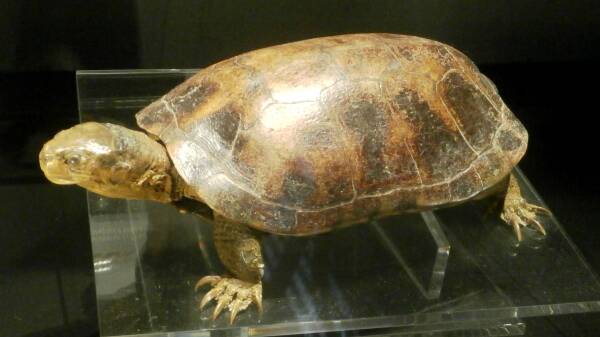
9. Yellow-throated water turtle
The yellow-throated water turtle, also known as the stone gold turtle, is one of the oldest and most primitive species of water turtles. They have high ornamental value and the color of their carapace will change depending on the breeding environment, so it is very important to provide them with a good breeding tank. Although the yellow-throated aquatic turtle does not have high requirements for water quality, in order to ensure the healthy growth of the turtle, the tap water still needs to be disinfected.
In addition, light is also an issue that needs attention. Ultraviolet rays in the sun help promote the conversion and synthesis of calcium in the turtle's body. It also helps with food digestion and sterilization, and can also improve the turtle's body color. Yellow-throated water turtles are omnivores and can be fed small fish, dried shrimps and other meats, or mixed feeds can be provided as food options.
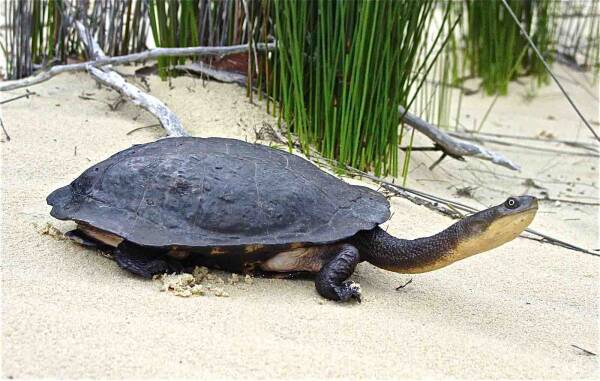
10. Snake-necked turtle
Because of their unique appearance, snake-necked turtles have become a favorite pet for many people. However, there are many things to pay attention to when raising snake-necked turtles. They have a huge appetite and a fast growth rate, so they need to prepare a large enough breeding container with a balcony and driftwood to provide a comfortable environment.
The water temperature is very important for the feeding of snake-necked turtles. It should be kept between 27-30 degrees. In summer, special attention should be paid not to exceed 30 degrees. At the same time, attention should be paid to water quality requirements, and daily care such as drying, changing water, and filtering is required. The pH value of the water should not be too high. Snake-necked turtles are suitable for acidic water, because acidic water can better inhibit the growth of bacteria. In addition, snake-necked turtles are carnivores and prefer live food. Therefore, a suitable supply of meat needs to be provided during the breeding process to meet their food needs.
Statement: The top ten most difficult to raise water turtles are mainly determined by searching relevant online platforms to find relevant turtles, and comprehensively considering their requirements for breeding environment, water temperature, water quality, feed and other factors. If you have any questions, please leave comments/criticisms at the end.
animal tags:
We created this article in conjunction with AI technology, then made sure it was fact-checked and edited by a Animals Top editor.